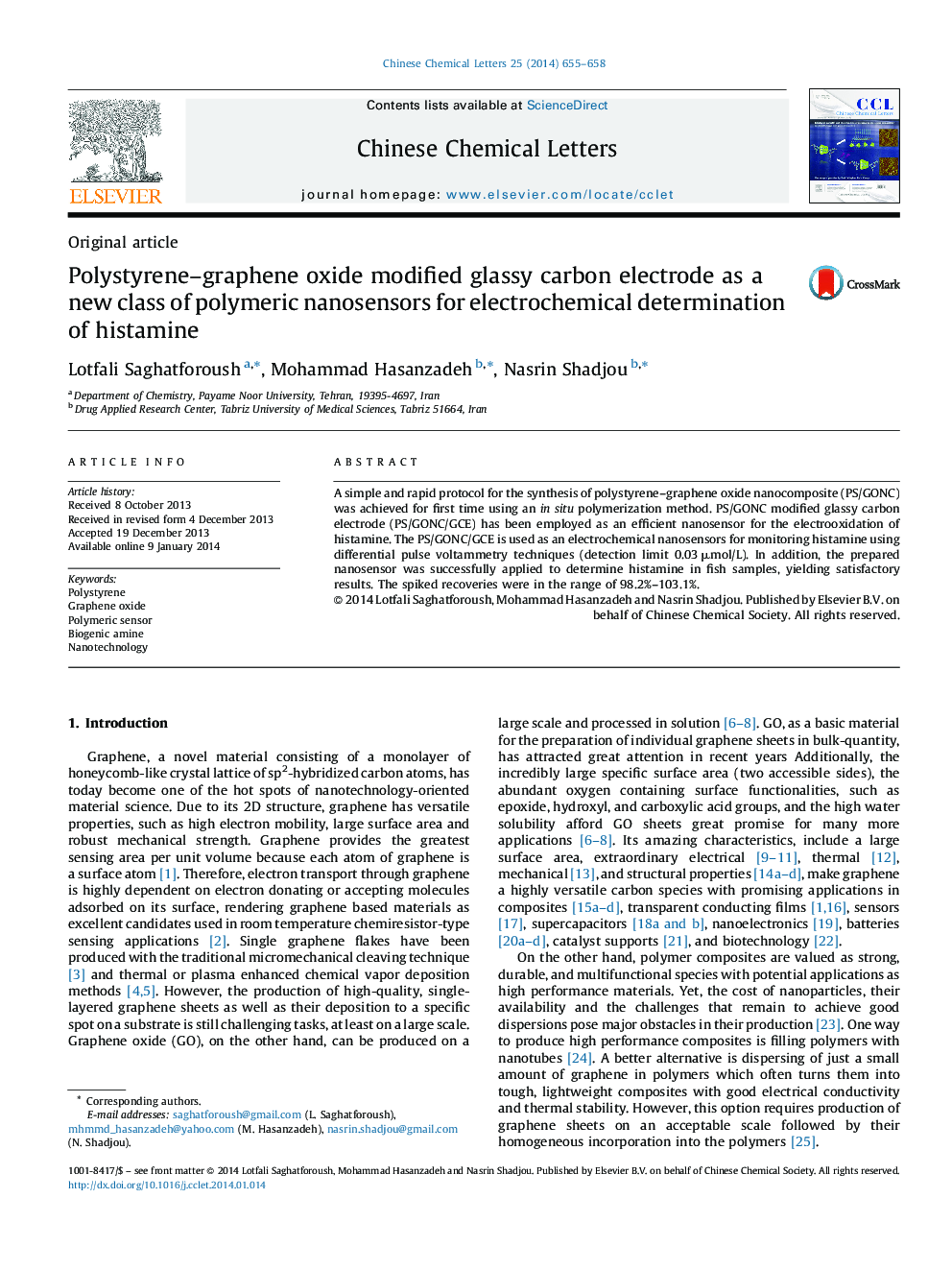| Article ID | Journal | Published Year | Pages | File Type |
|---|---|---|---|---|
| 1254196 | Chinese Chemical Letters | 2014 | 4 Pages |
A simple and rapid protocol for the synthesis of polystyrene–graphene oxide nanocomposite (PS/GONC) was achieved for first time using an in situ polymerization method. PS/GONC modified glassy carbon electrode (PS/GONC/GCE) has been employed as an efficient nanosensor for the electrooxidation of histamine. The PS/GONC/GCE is used as an electrochemical nanosensors for monitoring histamine using differential pulse voltammetry techniques (detection limit 0.03 μmol/L). In addition, the prepared nanosensor was successfully applied to determine histamine in fish samples, yielding satisfactory results. The spiked recoveries were in the range of 98.2%–103.1%.
Graphical abstractA facile and rapid synthesis of polystyrene–graphene oxide nanocomposite via in situ polymerization of styrene and graphene oxide is reported, which provides a path to a novel class of polymeric materials and their use in electrochemical sensing of histamine (a biogenic amine). Cyclic voltammetric studies indicated that the oxidation process of histamine is irreversible and diffusion controlled. The prepared nanocomposite shows excellent electroactivity for histamine oxidation.Figure optionsDownload full-size imageDownload as PowerPoint slide
